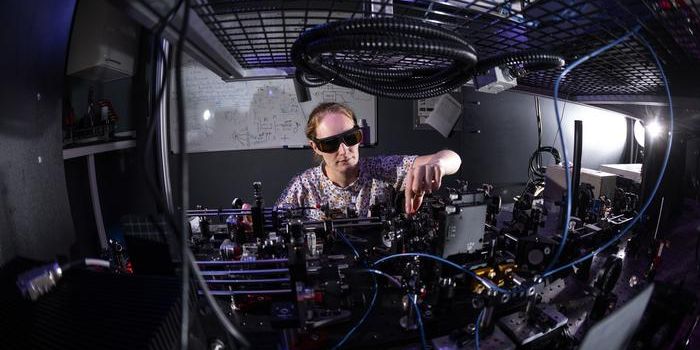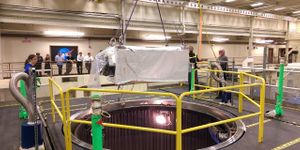A satellite image shows the intensity of gas flaring at the fuel production sites at Bakken Formation, a geological region that covers parts of Montana, North Dakota, Saskatchewan, and Manitoba. Credit: NASA
Gas flaring is a combustion process at industrial plants that burns off flammable gas that is released from pressure relief valves. At oil and natural gas production sites, the flare continues burning day and night. It is crucial for safety reasons because it protects against the dangers of over-pressurizing industrial plant equipment, which may lead to gas leakage or even an explosion. However, the practice of gas flaring leads to a twofold problem: it not only wastes usable fossil fuel, the burning of methane and other ingredients of natural gas also generates a significant amount of carbon dioxide emissions. If you choose to release the gas (which is principally methane) to nature, it becomes a hazard to both human and wild life, and causes a worse green house effect than carbon dioxide (34 times to be exact). Transporting it off-site for further processing is a costly option because extraction plants are often in remote areas. Therefore, approximately one-third of the natural gas produced during fossil fuel processing is wasted to feed the bright flares that can be seen from space.
A team of chemical engineering researchers from Washington State University wants to challenge the status quo. They constructed a device that can turn water and methane (the main component of natural gas) into carbon monoxide and hydrogen in a cost-effective way. The conventional process that does the same thing is called steam reforming. It is a reaction requiring a lot of water and a temperatures between 700 and 1100 degrees Celsius. In the new reactor, the reaction happens at much lower operating temperatures and with less water. Nickel is used to catalyze the process in the presence of an electrical field, which orients methane and water in a way that makes them easier to break apart. At the end of the process, monoxide and hydrogen are produced, both of which are useful as synthetic gas. They can also be converted to and stored as electricity within fuel cells.
When commenting on the mechanism behind the improved chemistry, Dr. Su Ha one of the group’s leader said: "It's like a combination lock. When you apply the right combination, when you apply the electric field with the right strength and right direction, it's like you are applying a combination to a lock and click, it opens."
Source: ACS Catalysis/Phys.org
-
MAY 07, 2024Is It Anti-RNP or Anti-Sm/RNP?
-
MAY 08, 2024Expand your Multiomic Capabilities with RNAscope™
- See More
-
MAY 07, 20243rd International Biosecurity Virtual Symposium
-
MAY 23, 2024For the Love of Digital PCR 2024
-
JUN 06, 2024The Future of Scientific Conferencing
- See More




















































